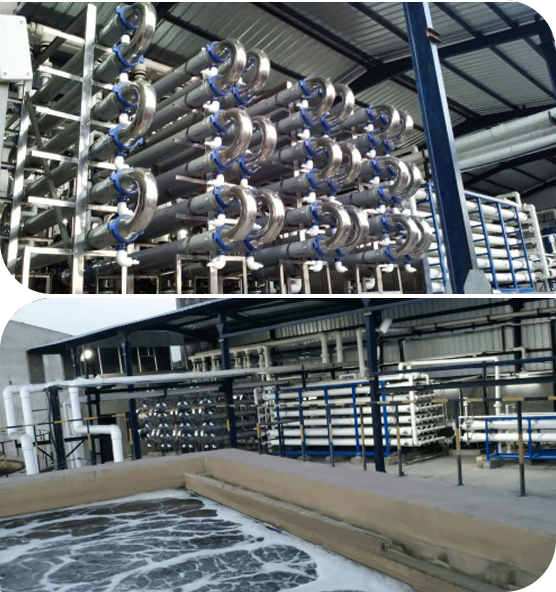
Waterman Engineers Australia is without doubt one of the major makers of Zero Liquid Discharge procedure. A ZLD procedure is really a remedy method which can be utilised to get rid of every one of the liquid waste from the procedure. The intention of ZLD drinking water treatment method is to cut back wastewater economically and create potable h2o that may be in good shape for usual use. Zero discharge technique is an advanced procedure system that comprises ultrafiltration, reverse osmosis, evaporation and fractional electro deionization. And we're a nicely-recognised supplier of ZLD systems.
In several Industries, including energy, oil & fuel, chemical substances, mining and Many others, a large amount of wastewater is created that must be managed. Conventionally, this discharge of wastewater is finished through a plant outfall to a surface area h2o entire body like an evaporation pond, or occasionally deep effectively injected. These tactics bring about lots of environmental considerations by the general public in several regions of the earth, as h2o is actually a scarce resource and its administration ought to be monitored. These problems have resulted in the establishment of ZLD processes by quite a few industries to reduce their environmental footprint and enhance sustainability. And, Waterman Engineers Australia are greatest ZLD suppliers yow will discover for this system.
Attributes OF ZERO LIQUID DISCHARGE SYSTEM
The Houses of the Zero Liquid Discharge method can differ based on the distinct design and technological innovation made use of. Nevertheless, some popular properties of ZLD methods consist of:
H2o Conservation: Among the primary goals of ZLD systems would be to preserve water by reducing the discharge of liquid waste into the setting.
Higher Water Purity: ZLD programs are intended to develop higher-high-quality drinking water that may be absolutely free from impurities and contaminants, that makes them ideal for use in several industrial procedures.
Flexibility: ZLD units will often be designed to support a wide variety of input liquid streams, that makes them multipurpose and ideal for use in several industries.
State-of-the-art Wastewater Treatment: Zero liquid discharge programs use Superior wastewater treatment strategies to eliminate impurities and contaminants from your effluent, making high-top quality water.
Squander Reduction: ZLD methods enable decrease waste by decreasing the amount of liquid waste that should be disposed of and by making a concentrated, sound squander substance that can be Zld System Manufacturer Zero Liquid Discharge System safely and securely disposed of.
Electrical power Efficiency: ZLD techniques may be Power-intensive because of the substantial Electrical power requirements of evaporation and other wastewater treatment procedures. Having said that, advances in technological innovation are making Zero liquid discharge devices much more Electrical power-productive and cost-productive.
Waterman Engineers Australia manufactures Zero Liquid Discharge (ZLD) techniques created to remove all liquid waste, aiming to generate potable drinking water and decrease environmental influence. Their ZLD systems generally include ultrafiltration, reverse osmosis, evaporation, and fractional electro deionization. Important technologies utilised are Slipping Film Brine Concentrators, Pressured Circulation Crystallizer, and Other people, using a two-action process of pre-focus and evaporation/crystallization to recover and reuse h2o. These systems are adaptable to diverse industries, emphasizing water conservation, significant h2o purity, waste reduction, and Electrical power effectiveness. Technological specs are varied and customizable, looking at variables like h2o resource, movement level, and feed water high-quality.
The necessity for Zero Liquid Discharge (ZLD) techniques arises in the necessity to handle environmental fears linked to drinking water scarcity and pollution. In industries like electricity, oil & gasoline, and mining, broad quantities of wastewater are generated. Historically, this wastewater is discharged into bodies of drinking water, producing air pollution and depleting clean up drinking water assets. ZLD systems goal to minimize these impacts by dealing with and recycling wastewater in the economic course of action, thereby conserving drinking water, lessening squander, and advertising sustainability.
When contemplating the specialized specifications of a Zero Liquid Discharge (ZLD) program, crucial features to target incorporate the drinking water supply it'll handle, the technique's stream amount, the standard of feed drinking water, the levels of treatment included, the Restoration fee of drinking water, strategies for focus disposal, elements of development, operating circumstances, and method automation and control. These factors make sure the technique's usefulness, durability, and performance in managing and recycling industrial wastewater.
Zero Liquid Discharge (ZLD) crops supply Positive aspects for example water conservation, waste reduction, and air pollution prevention, contributing to environmental sustainability. They are relevant in industries like electricity era, oil and gas, chemicals, and mining, where they assist in controlling industrial wastewater properly, cutting down the ecological footprint, and complying with rigorous environmental rules. These methods are essential in locations facing h2o scarcity and for industries aiming to enhance their sustainability and operational efficiency.
FAQs for just a Zero Liquid Discharge (ZLD) technique frequently tackle its operational rules, cost-success, routine maintenance necessities, environmental effects, applicability across various industries, and regulatory compliance. These thoughts support users recognize the technique's Positive aspects, technical requires, and suitability for their unique wastewater administration demands.
1. Zero Liquid Discharge (ZLD) is usually a wastewater remedy system created to eliminate all liquid squander.
two. The program's elements are influenced by the particular industrial procedure, wastewater composition, and regulatory requirements.
three. Effluent cure plants take away pollutants from textile effluents to circumvent environmental contamination.
four. Positive aspects include things like h2o conservation, pollution reduction, and regulatory compliance.
5. The target is to minimize environmental influence by recycling water and minimizing squander.
six-9. Effluent cure crops are levels in wastewater cure: primary (physical separation), secondary (Organic treatment), and tertiary (Sophisticated remedy).
ten. Device functions contain filtration, sedimentation, biological therapy, and disinfection.
eleven. Restricting parameters are elements that have an affect on the procedure's effectiveness, like pH and contaminant concentration.
twelve. Style and design considerations contain circulation fee, effluent composition, and preferred high quality of treated h2o.